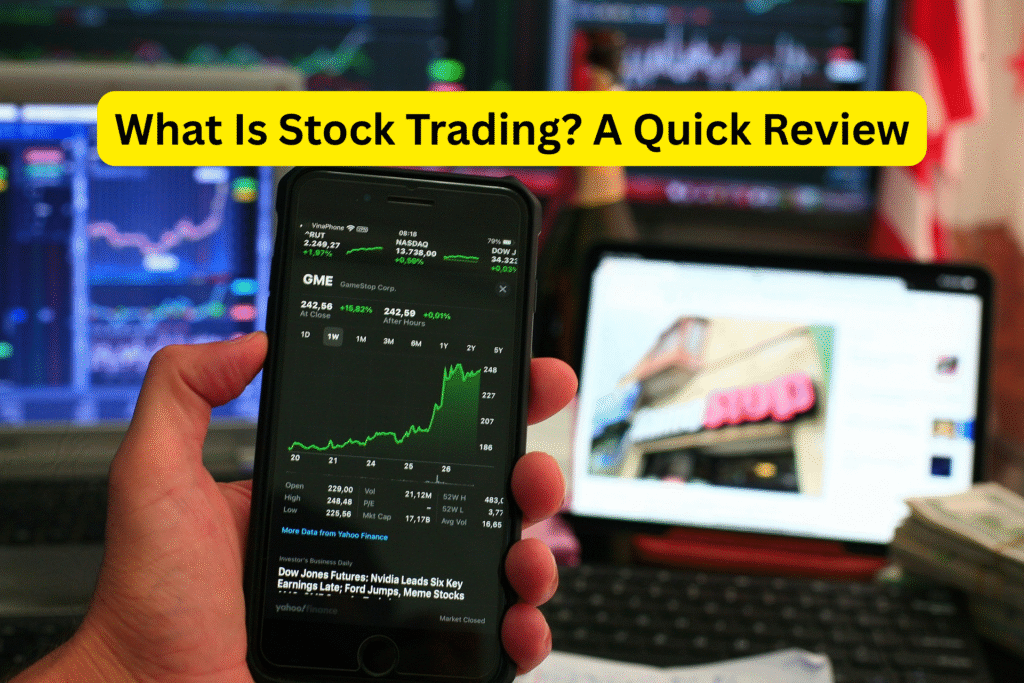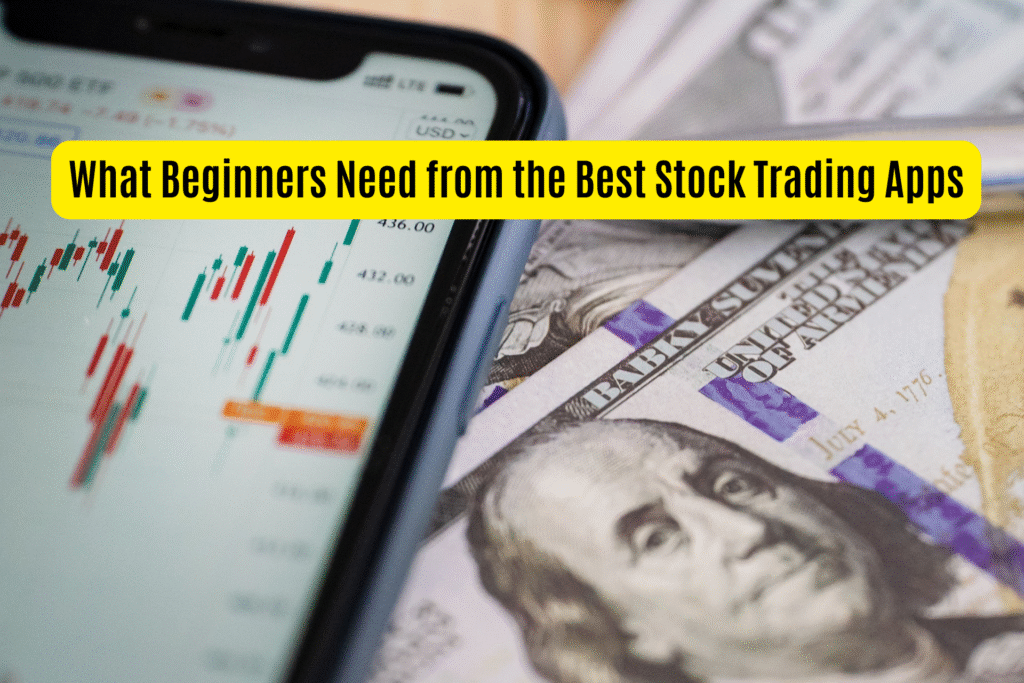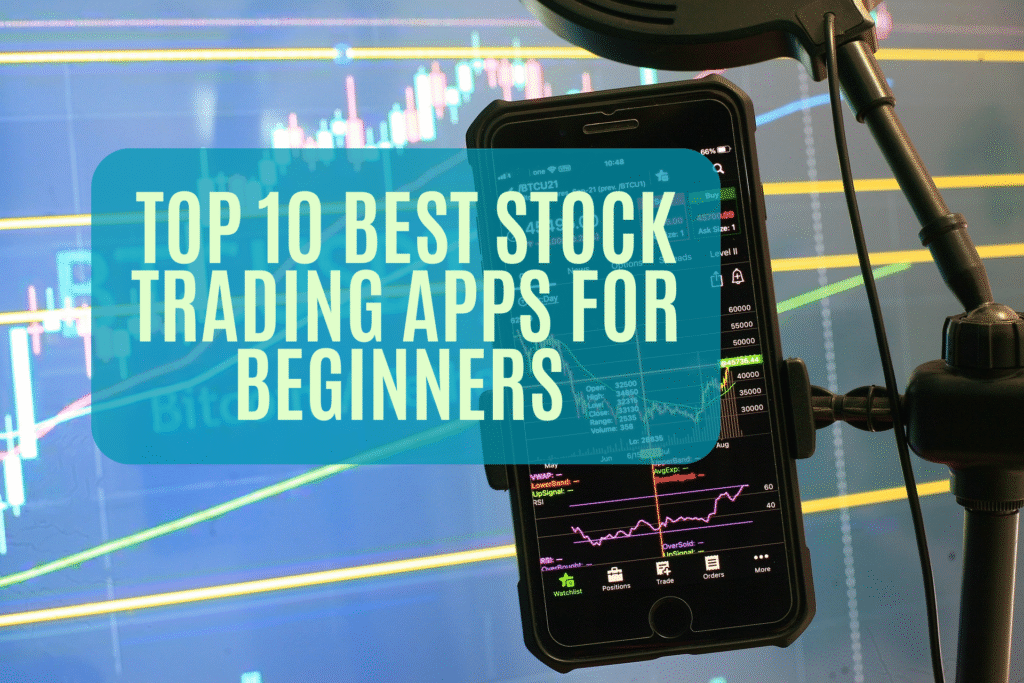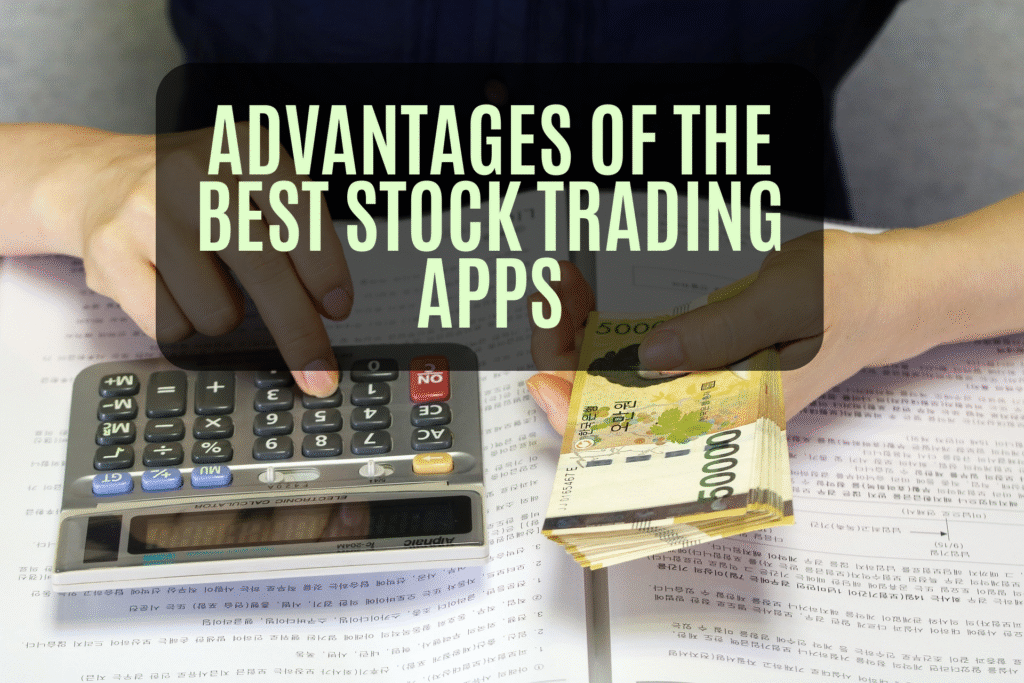Earlier, when we started trading and we jumped headfirst into stock trading with flashy new apps promising instant profits. We were beginner investors chasing quick wins, not realizing that hidden fees, confusing user interfaces, and frustrating outages would wipe us out instead. We lost money—and a lot of confidence—fast. But luckily, you would not have to go through that experience, as we will be unpacking the best stock trading apps you can start with as a total beginner.
Here are some of our popular post: Top 10 best website builders, Best super foods for a healthy lifestyle, the unlimited list of free productivity apps, Best freelance site to find remote jobs, top 10 productivity hacks for entrepreneurs, 10 best side hustles to make extra money online, best online courses for learning digital skills, top 10 best free coding website
The turning point came when we took a more thoughtful approach. We researched, tested, and identified the best stock trading apps designed specifically for beginners: apps with transparent pricing, built-in education, and tools to help us learn. Over time, we stopped bleeding cash and started growing our portfolios instead.
This article streamlines that journey for you. Consider it a shortcut to avoid rookie errors and begin investing seriously, without sacrificing your savings or peace of mind.
What Is Stock Trading? A Quick Review

Stock trading is the process of buying and selling ownership shares in publicly traded companies. When an individual purchases a stock, they are essentially acquiring a piece of that company, making them a shareholder. As a shareholder, you share in both the profits and the risks of that business. If the company performs well, the value of your stock can increase, and you might also earn dividends—payments made from company profits. On the other hand, if the company underperforms, the value of your stock can decline, resulting in a potential loss. This dynamic nature of stock trading is what makes it both an exciting and risky avenue for growing wealth.
The history of stock trading stretches back centuries and is rich with innovation and transformation. In the 1300s, merchants in Venice were known to trade government bonds, which laid the early foundations for organized financial markets. This activity was rudimentary by today’s standards, but it introduced the idea of investing in state ventures.
By 1602, a major leap occurred when the Dutch East India Company became the first entity to publicly offer shares of stock. This marked the birth of the modern stock market. Investors could buy ownership in a company and potentially profit from global trade missions, a revolutionary idea at the time. This public offering also led to the establishment of the Amsterdam Stock Exchange, the world’s first official stock exchange.
Fast forward to 1792, the formation of the New York Stock Exchange (NYSE) began under the Buttonwood Agreement, signed by 24 stockbrokers under a buttonwood tree on Wall Street. This agreement standardized how securities were bought and sold in the U.S., setting the stage for Wall Street to become a global financial hub.
The next major innovation came in 1971 with the launch of NASDAQ, the world’s first electronic stock exchange. This dramatically changed how trades were executed by introducing faster, more automated systems, which paved the way for the modern electronic trading environment we use today.
During the 1990s and 2000s, the rise of online discount brokers like E*TRADE, Charles Schwab, and TD Ameritrade began to democratize stock trading. No longer did individuals need a traditional stockbroker or large amounts of capital to start investing. With just a computer and internet connection, anyone could start trading from home with lower fees and greater transparency.
By the 2020s and continuing into 2025, the stock trading landscape underwent yet another major shift. Mobile stock trading apps like Robinhood, Webull, and Public made it possible for beginners to open brokerage accounts from their smartphones within minutes. These platforms introduced commission-free trading, fractional shares, and simple user interfaces, removing most of the traditional barriers to entry. Moreover, AI tools and machine learning algorithms have begun to play a significant role, helping users analyze trends, automate trades, and even receive real-time financial advice tailored to their goals.
Together, these milestones show how stock trading has evolved from an elite practice reserved for governments and wealthy merchants to a global, tech-powered opportunity accessible to virtually anyone. As we move deeper into the digital age, the fusion of artificial intelligence, real-time data analytics, and decentralized finance continues to redefine what it means to be an investor, making it easier than ever for beginners to participate in the markets confidently and wisely.
Today, more people than ever can engage in trading quickly and easily, but not all apps are created equal.
What Beginners Need from the Best Stock Trading Apps

Avoid costly choices by prioritizing these essentials: Each element plays a key role in ensuring both a smooth user experience and a smart investing journey.
#1. User-Friendly Design: A clean, intuitive interface is essential for beginners who may be navigating stock trading platforms for the first time. The best stock trading apps prioritize simplicity in layout, making it easy to find important sections like your portfolio, watchlist, trade options, and market news. A clutter-free dashboard with well-labeled icons reduces confusion and helps new investors build confidence from day one.
#2. Quality Educational Content: In-app education transforms an ordinary app into a powerful learning platform. Look for apps that offer interactive guides, explainer videos, quizzes, glossaries, and “learn as you go” tips. These tools help users understand investing jargon, strategies, and how the markets work, all while using the app in real time. This feature is critical for anyone wanting to grow from beginner to informed investor.
#3. Low or No Fees: Hidden fees can quietly eat away at your profits, especially if you’re starting with a small budget. The best stock trading apps for beginners offer commission-free trades, zero account minimums, and no maintenance or inactivity charges. Transparent pricing ensures that more of your money goes into investments, not into someone else’s pocket.
#4. Fractional Investing: Fractional shares allow you to invest in expensive stocks with just a few dollars. For example, instead of paying over $3,000 for one share of Amazon, you can buy $10 worth. This makes diversification possible even on a tight budget and removes the traditional barrier of needing a large sum to start investing in big-name companies.
#5. Practice or Paper Trading Accounts: The best trading apps offer simulated trading environments where you can practice placing trades without using real money. This feature allows beginners to explore the platform, test strategies, and understand how the market behaves, without the fear of losing their funds. It’s like a training ground where you build skills before going live.
#6. Responsive Customer Support: Reliable, fast customer service is a lifesaver when you run into technical issues or have urgent questions. Whether it’s through live chat, phone calls, or responsive email support, having access to real human help can prevent costly mistakes. Many top-rated apps also include searchable knowledge bases and active community forums where users can get advice.
#7. Strong Security Features: Security should never be an afterthought, especially when financial data is involved. The best stock trading apps come equipped with industry-standard safety measures like two-factor authentication (2FA), biometric login (fingerprint or facial recognition), and end-to-end data encryption. These features help keep your account safe from hackers and unauthorized access.
When these seven components come together, you get a trading app that’s not just convenient but also educational, secure, and financially efficient. This is what makes these platforms the best stock trading apps for new investors in 2025, because they don’t just enable trading; they empower learning and long-term growth.
.
These features aren’t just nice-to-haves—they distinguish the best stock trading apps that prioritize beginner success.
Top 10 Best Stock Trading Apps for Beginners in 2025

From our personal user experience and further research, here are apps that tick those boxes, helping you move from beginner to confident investor:
#1. Charles Schwab offers $0 trading fees, fractional shares through “Stock Slices,” and a massive library of webinars and articles. Their app is intuitive yet rich in tools.
#2. Fidelity allows investing with as little as $1 through “Stocks by the Slice,” supports mobile-first education, and maintains top-rated customer service.
#3. Robinhood revolutionized access with commission-free trading. It’s sleek and beginner-friendly, now expanding into AI-powered features and extended trading hours.
#4. ETRADE provides dual platforms—Power ETRADE for learning and ETRADE Mobile for beginners—along with fee-free trades and paper trading.
#5. Webull delivers professional-tier charting and real-time data, commission-free trading, and a paper trading feature praised for its depth.
#6. Betterment is ideal for hands-off investors, offering customized portfolios based on your goals and minimal fees, great for long-term planning.
#7. Public.com adds a social twist, with communities to follow and themed investing. It promotes transparency and doesn’t rely on payment-for-order-flow revenue.
#8. SoFi Invest merges active investing with automated portfolios. It offers free financial planning and educational content, plus a welcome bonus stock.
#9. Acorns makes investing effortless by rounding up everyday purchases and investing the spare change in diversified portfolios.
#10. M1 Finance introduces “Pie” portfolios—custom asset allocations and auto-rebalancing with no trading commissions. It suits long-term builders well.
Advantages of the Best Stock Trading Apps

These platforms stand out for several key reasons. These features don’t just enhance the user experience—they empower first-time investors to build confidence and make smarter financial decisions from the start.
#1. Confidence with Learning: Great trading apps are built with beginners in mind, offering robust educational support right inside the platform. You’ll find in-app tutorials, real-time trading tips, financial glossaries, and access to free or paid webinars. These resources demystify market concepts, making stock trading less intimidating. Whether you’re learning what a “limit order” means or how to read a candlestick chart, these tools allow you to grow while actively participating.
#2. Transparent Fees: Nobody likes financial surprises, especially when starting. The best apps are upfront about their pricing, offering commission-free trades and no hidden maintenance fees or account minimums. This transparency ensures you can invest with clarity, knowing exactly where your money is going. Apps with clear fee structures help you keep more of your gains, which is crucial when your account balance is still growing.
#3. Accessibility: Fractional investing has been a game-changer. It allows you to invest small amounts—sometimes as little as $1—in companies whose full shares might cost hundreds or thousands of dollars. Whether it’s Apple, Tesla, or Amazon, beginners can now own a piece of industry giants without needing a big budget. This democratization of investing makes it easier for anyone to get started and diversify early.
#4. On-the-go Convenience: Mobile stock trading apps give you the flexibility to manage your investments from anywhere. Whether you’re on a lunch break or stuck in traffic (as a passenger), you can quickly check your portfolio, research stocks, or execute trades. Push notifications also keep you updated on market shifts, dividend payments, and breaking news—so you’re always in the loop, even when you’re on the move.
#5. Customization: Every investor is different, and the best stock trading apps respect that. They let you choose your preferred investing style—whether you want to DIY and pick every stock yourself, follow expert-curated portfolios, automate your investments with robo-advisors, or explore social investing by following other traders. This flexibility ensures that you’re not forced into a one-size-fits-all approach and can evolve your strategy as you grow.
#6. Reliable Security: Trust and safety are non-negotiable when it comes to your money. Top-rated stock trading apps come fortified with bank-level encryption, real-time fraud monitoring, and two-factor authentication to protect your data and assets. Many are also backed by FDIC insurance for cash balances and SIPC protection for securities, giving you peace of mind that your investments are secured, even in uncertain market conditions.
Together, these features form the backbone of the best stock trading apps available today. They combine education, transparency, accessibility, mobility, personalization, and protection into a complete beginner-friendly toolkit—perfect for anyone looking to start investing in 2025 with confidence and clarity.
Conclusion: Best stock trading apps
Trading doesn’t need to be daunting. With the best stock trading apps, you get hands-on learning, cost transparency, and the tools to succeed, even starting with small investments. Choose the platform that best fits your investment style, whether self-directed or automated.
Here are some of our popular post: Top 10 best website builders, Best super foods for a healthy lifestyle, the unlimited list of free productivity apps, Best freelance site to find remote jobs, top 10 productivity hacks for entrepreneurs, 10 best side hustles to make extra money online, best online courses for learning digital skills, top 10 best free coding website
From here, start small. Practicing with paper trades or fractional shares can build confidence. As your skills and account grow, reevaluate your app, diversify your holdings, and consider branching into advanced tools.
Your smarter, more secure investing journey begins today.


